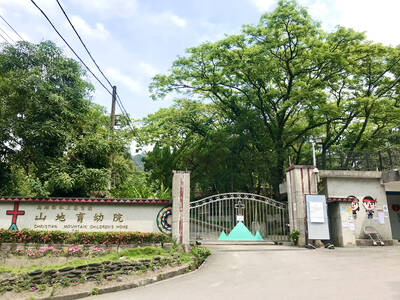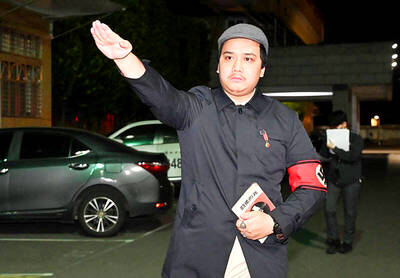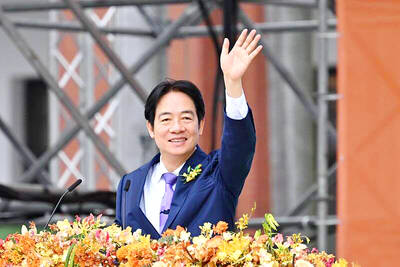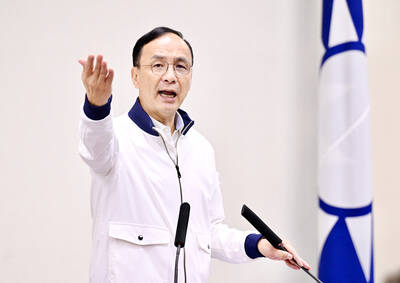Among the many temptations of the digital age, photo-manipulation has proved particularly troublesome for science, and scientific journals are beginning to respond.
Some journal editors are consid-ering adopting a test, in use at The Journal of Cell Biology, that could have caught the concocted images of the human embryonic stem cells made by Dr. Hwang Woo-suk.
At The Journal of Cell Biology, the test has revealed extensive manipulation of photos. Since 2002, when the test was put in place, 25 percent of all accepted manuscripts have had one or more illustrations that were manipu-lated in ways that violate the journal's guidelines, said Michael Rossner of Rockefeller University, the executive editor. The editor of the journal, Ira Mellman of Yale, said that most cases were resolved when the authors provided originals. "In 1 percent of the cases we find authors have engaged in fraud," he said.

PHOTO: NY TIMES NEWS SERVICE
The two editors recognized the likelihood that images were being improperly manipulated when the journal required all illustrations to be submitted in digital form. While reformatting illustrations submitted in the wrong format, Rossner realized that some authors had yielded to the temptation of Photoshop's image-changing tools to misrepresent the original data.
In some instances, he found, authors would remove bands from a gel, a test for showing what proteins are present in an experiment. Sometimes a row of bands would be duplicated and presented as the controls for a second experiment. Sometimes the background would be cleaned up, with Photoshop's rubber stamp or clone stamp tool, to make it prettier.
Some authors would change the contrast in an image to eliminate traces of a diagnostic stain that showed up in places where there shouldn't be one. Others would take images of cells from different experiments and assemble them as if all were growing on the same plate.

PHOTO: NY TIMES NEWS SERVICE
To prohibit such manipulations, Rossner and Mellman published guidelines saying, in effect, that nothing should be done to any part of an illustration that did not affect all other parts equally. In other words, it is fine to adjust the brightness or color balance of the whole photo, but not to obscure, move or introduce an element.
They started checking illustrations in accepted manuscripts by running them through Photoshop and adjusting the controls to see if new features appeared. This is the check that has shown a quarter of accepted manuscripts violate the journal's guidelines.
In the 1 percent of cases in which the manipulation is deemed fraudulent -- a total of 14 papers so far -- the paper is rejected. Revoking an accepted manuscript requires the agreement of four of the journal's officials. "In some cases we will even contact the author's institution and say, `You should look into this because it was not kosher,"' Mellman said.
He and Rossner plan to add software tests being developed by Hani Farid, an applied mathema-tician at Dartmouth. With a grant from the FBI, which is interested in ways of authenticating digital images presented in court, Farid is devising algorithms to detect alterations.
His work has attracted interest from many people, he said, including eBay customers concerned about the authenticity of images, people answering personal ads, paranormal researchers studying ghostly emanations and science editors.
For the latter, Farid is devel-oping a package of algorithms designed to spot specific types of image manipulation. When researchers seek to remove an object from an image, such as a band from a gel, they often hide it with a patch of nearby background. This involves a duplication of material, which may be invisible to the naked eye but can be detected by mathematical analysis.
If an object is enlarged beyond the proper resolution, Photoshop may generate extra pixels. If the object is rotated, another set of pixels is generated in a characteristic pattern.
An object introduced from another photo may have a different angle of illumination. The human eye is largely indifferent to changes in lighting, Farid said, but conflicting sources of illumination in a single image can be detected by computer analysis and are a sign of manipulation.
"At the end of the day you need math," Farid said. He hopes to have a set of tools available soon for beta-testing by Rossner.
Journals depend heavily on expert reviewers to weed out papers of poor quality. But as the Hwang case showed again, reviewers can do only so much. The defined role of reviewers is not to check for concocted data but to test whether a paper's conclusions follow from the data presented.
The screening test addresses an issue reviewers cannot easily tackle, that of whether the presented data accurately reflect the real data. Because journal editors now have the ability to perform this sort of quality control, "they should do it," Rossner said.
The scientific community has not yet come to grips with the temptations of image manipulation, Mellman said, and he would like to see other journals adopt the image-screening system, even though it takes 30 minutes per paper. "We are a poor university press," he said, without the large revenue enjoyed by journals such as Nature, Science and Cell. "If they can't bear this cost, something must be dreadfully wrong with their business models," he said.

May 18 to May 24 Pastor Yang Hsu’s (楊煦) congregation was shocked upon seeing the land he chose to build his orphanage. It was surrounded by mountains on three sides, and the only way to access it was to cross a river by foot. The soil was poor due to runoff, and large rocks strewn across the plot prevented much from growing. In addition, there was no running water or electricity. But it was all Yang could afford. He and his Indigenous Atayal wife Lin Feng-ying (林鳳英) had already been caring for 24 orphans in their home, and they were in

On May 2, Chinese Nationalist Party (KMT) Chairman Eric Chu (朱立倫), at a meeting in support of Taipei city councilors at party headquarters, compared President William Lai (賴清德) to Hitler. Chu claimed that unlike any other democracy worldwide in history, no other leader was rooting out opposing parties like Lai and the Democratic Progressive Party (DPP). That his statements are wildly inaccurate was not the point. It was a rallying cry, not a history lesson. This was intentional to provoke the international diplomatic community into a response, which was promptly provided. Both the German and Israeli offices issued statements on Facebook

President William Lai (賴清德) yesterday delivered an address marking the first anniversary of his presidency. In the speech, Lai affirmed Taiwan’s global role in technology, trade and security. He announced economic and national security initiatives, and emphasized democratic values and cross-party cooperation. The following is the full text of his speech: Yesterday, outside of Beida Elementary School in New Taipei City’s Sanxia District (三峽), there was a major traffic accident that, sadly, claimed several lives and resulted in multiple injuries. The Executive Yuan immediately formed a task force, and last night I personally visited the victims in hospital. Central government agencies and the

Australia’s ABC last week published a piece on the recall campaign. The article emphasized the divisions in Taiwanese society and blamed the recall for worsening them. It quotes a supporter of the Taiwan People’s Party (TPP) as saying “I’m 43 years old, born and raised here, and I’ve never seen the country this divided in my entire life.” Apparently, as an adult, she slept through the post-election violence in 2000 and 2004 by the Chinese Nationalist Party (KMT), the veiled coup threats by the military when Chen Shui-bian (陳水扁) became president, the 2006 Red Shirt protests against him ginned up by